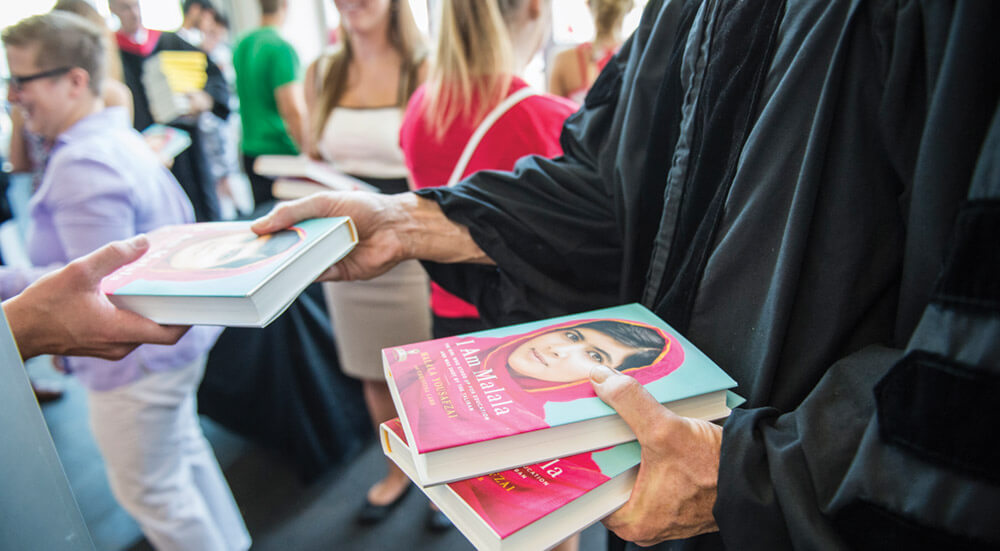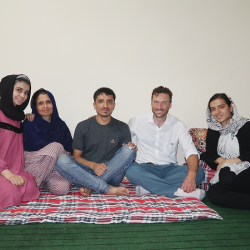Malala’s Story
This year’s book program says go read — and then go do.
Malala Yousafzai became a household name for defying the Taliban and campaigning for girls in Pakistan to have the right to an education. Now readers across the campus and beyond are discovering the inspiration behind her mission and the rich and complicated history of her home country.
Her book, I Am Malala: The Girl Who Stood Up for Education and Was Shot by the Taliban, is this year’s pick for Go Big Read, the university’s common-reading program.
“Malala’s story is about the value of doing something — anything, even when it’s scary and even when you’re not sure it’s the exact right solution — rather than sitting around feeling hopeless,” Chancellor Rebecca Blank told the more than five thousand students who attended convocation at the start of fall semester. “And it’s about the power each one of us holds to make good things happen for ourselves and for those around us.”
The seventeen-year-old Pakistani activist won this year’s Nobel Peace Prize and was recently named by TIME as one of the one hundred most influential people in the world. She and her family now live in England, where she continues to go to school.
In October, Shiza Shahid, the CEO and co-founder of the Malala Fund, spoke on campus and met with groups of students. She grew up in Islamabad, Pakistan, three hours from the Swat Valley where Yousafzai lived. At age eighteen, Shahid left Pakistan to attend Stanford University on a scholarship, but she continued to follow developments in her home country, especially the issues facing its girls and women. In 2009, she organized a summer camp in Islamabad for Yousafzai and about two dozen other girls with the goal of helping them advocate for their right to attend school.
The two were reunited three years later after Yousafzai was shot and transported to Great Britain for treatment. Since then, Shahid and Yousafzai have teamed up to help the more than sixty million adolescent girls worldwide who are denied a formal education because of social, economic, legal, and political factors.
Published in the Winter 2014 issue




Comments
No comments posted yet.